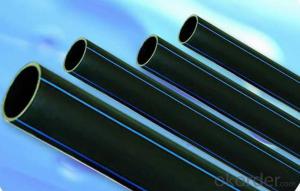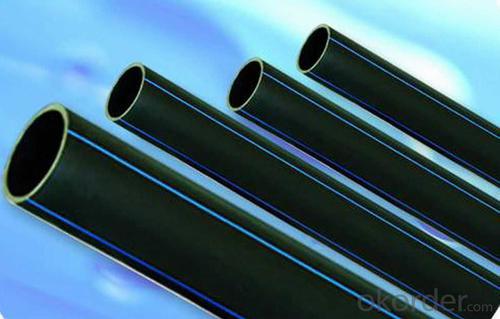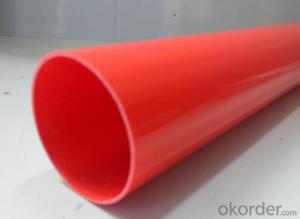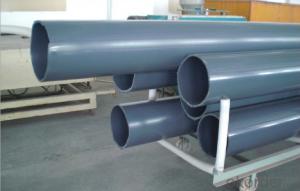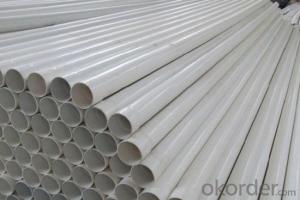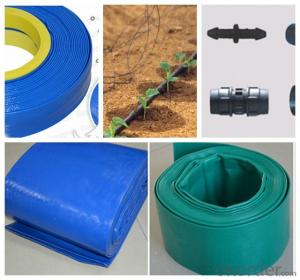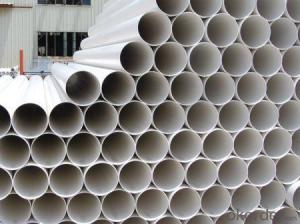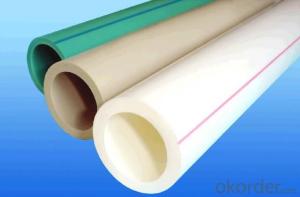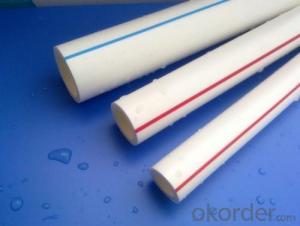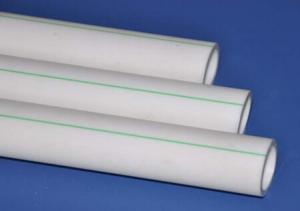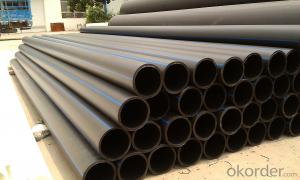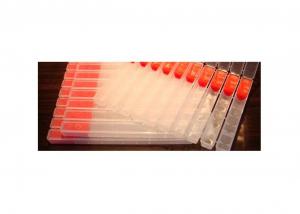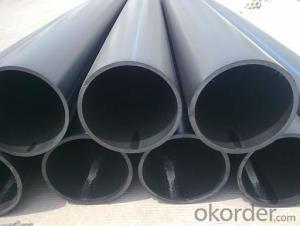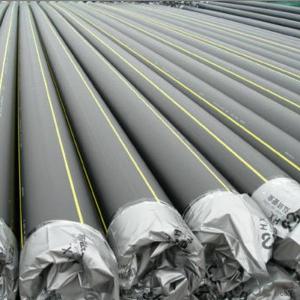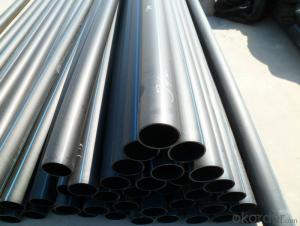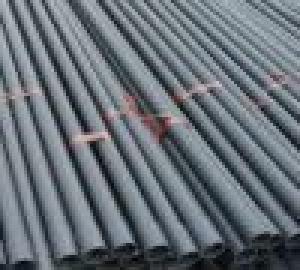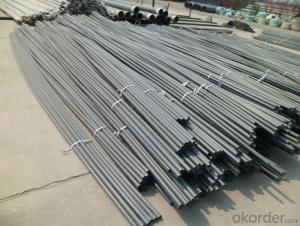Plastic Tubes HDPE Pipe ISO4427-2000 DN16
- Loading Port:
- China Main Port
- Payment Terms:
- TT OR LC
- Min Order Qty:
- -
- Supply Capability:
- -
OKorder Service Pledge
OKorder Financial Service
You Might Also Like
Physical properties[edit]
Polyethylene is a thermoplasticpolymer consisting of long hydrocarbon chains. Depending on the crystallinity and molecular weight, a melting point and glass transition may or may not be observable. The temperature at which these occur varies strongly with the type of polyethylene. For common commercial grades of medium- and high-density polyethylene the melting point is typically in the range 120 to 180 °C (248 to 356 °F). The melting point for average, commercial, low-density polyethylene is typically 105 to 115 °C (221 to 239 °F).it is transprant.
Chemical properties[edit]
Most LDPE, MDPE and HDPE grades have excellent chemical resistance, meaning that it is not attacked by strong acids or strong bases. It is also resistant to gentle oxidants and reducing agents. Polyethylene burns slowly with a blue flame having a yellow tip and gives off an odour of paraffin. The material continues burning on removal of the flame source and produces a drip.[3] Crystalline samples do not dissolve at room temperature. Polyethylene (other than cross-linked polyethylene) usually can be dissolved at elevated temperatures in aromatic hydrocarbons such as toluene or xylene, or in chlorinated solvents such as trichloroethane or trichlorobenzene.[4]
GB/T13663-2000:
| PE63管材规格 | |||||
| 公称 外径dn,mm | SDR33 | SDR26 | SDR17.6 | SDR13.6 | SDR11 |
| 公称压力 PN,Mpa | |||||
| 0.32 | 0.4 | 0.6 | 0.8 | 1.0 | |
| 公称 壁厚 | 公称 壁厚 | 公称 壁厚 | 公称 壁厚 | 公称 壁厚 | |
| 16 | 2.3 | ||||
| 20 | 2.3 | 2.3 | |||
| 25 | 2.3 | 2.3 | 2.3 | ||
| 32 | 2.3 | 2.4 | 2.9 | ||
| 40 | 2.3 | 2.3 | 3.0 | 3.7 | |
| 50 | 2.3 | 2.9 | 3.7 | 4.6 | |
| 63 | 2.3 | 2.5 | 3.6 | 4.7 | 5.8 |
| 75 | 2.3 | 2.9 | 4.3 | 5.6 | 6.8 |
| 90 | 2.8 | 3.5 | 5.1 | 6.7 | 8.2 |
| 110 | 3.4 | 4.2 | 6.3 | 8.1 | 10.0 |
| 125 | 3.9 | 4.8 | 7.1 | 9.2 | 11.4 |
| 140 | 4.3 | 5.4 | 8.0 | 10.3 | 12.7 |
| 160 | 4.9 | 6.2 | 9.1 | 11.8 | 14.6 |
| 180 | 5.5 | 6.9 | 10.2 | 13.3 | 16.4 |
| 200 | 6.2 | 7.7 | 11.4 | 14.7 | 18.2 |
| 225 | 6.9 | 8.6 | 12.8 | 16.6 | 20.5 |
| 250 | 7.7 | 9.6 | 14.2 | 18.4 | 22.7 |
| 280 | 8.6 | 10.7 | 15.9 | 20.6 | 25.4 |
| 315 | 9.7 | 12.1 | 17.9 | 23.2 | 28.6 |
| 355 | 10.9 | 13.6 | 20.1 | 26.1 | 32.2 |
| 400 | 12.3 | 15.3 | 22.7 | 29.4 | 36.3 |
| 450 | 13.8 | 17.2 | 25.5 | 33.1 | 40.9 |
| 500 | 15.3 | 19.1 | 28.3 | 36.8 | 45.4 |
| 560 | 17.2 | 21.4 | 31.7 | 41.2 | 50.8 |
| 630 | 19.3 | 24.1 | 35.7 | 46.3 | 57.2 |
- Q: About plastic drain pipe expansion joint
- The expansion joint of the transverse tube shall not use the expansion joint of the vertical pipe, and the pressure bearing performance of the special expansion joint of the transverse tube shall not be less than 0.08MPa.
- Q: What are the ways to remove the taste in plastic pipes?
- Method for removing peculiar smell of plastic pipe by using orange peel. Wash it with detergent first. Then put the fresh orange peel in it and cover it for about 3 to 4 hoursRinse well.
- Q: Can plastic tubes be used for storing liquids?
- Yes, plastic tubes can be used for storing liquids as they are often made from materials that are resistant to corrosion and leakage, making them suitable for a wide range of liquid storage applications. Additionally, plastic tubes can be manufactured in various sizes and shapes, making them versatile for different liquid storage needs.
- Q: he said something about the pressure. That being the reason he had to get new tubing.
- First okorder and type in your car and it will and you can do a search for a fuel pump and it will show you a picture and print it out and take it with you then you will know if he is trying to take your money or not I have done a few and I have never had a problem like you describe
- Q: I am hoping someone has designed a new, innovative style or shape of a bread box that is more functional as well. Is this a possibility or am I fantasizing about a bread box of the future? Anyone know where to buy one?
- How about working with a nationally renowned woodworking artist to incorporate your thoughts with their ability at an affordable price?
- Q: I need to clean my gravel and have read a bunch of reveiws on the gravel cleaning syphons and I don't want to waste my money on a cleaner that doesnt work. I might not be using the correct term for the product, it is one of those tubes that you shake to create a syphon. Thanks for all your help
- The easiest way is to suck on the end of the tube to draw up water and kink the tube or use your finger to cover the end .to keep the water near to the end. Then lower the end to the container and let off your finger. The weight of water in the tube and gravity will do the rest. As long as you have the end of the tube above the level of water in the tank while you are drawing water into the tube, you will NOT get a mouthful as you can see to stop just before the water gets to the end. I am sure you are smart enough to stop before you get a mouthful of water. As long as the end is above the level in the tank the siphon will NOT start and you will have to apply suction to hold the water in the tube until you kink it or use your finger to seal the end. The only way to get a mouthful is if your mouth is lower then the level in the tank so the siphon starts once the water crosses the threshold, Be careful not to suck up the fish...
- Q: Which drain is more effective, plastic pipe or concrete drain?
- Plastic plastic PE. Good! And is suitable for pipelines with pressure. The connection with hot melt welding, good water tightness
- Q: Are plastic tubes resistant to bending fatigue?
- Yes, plastic tubes are generally resistant to bending fatigue due to their flexibility and ability to withstand repeated bending without breaking or becoming damaged.
- Q: What is the shelf life of plastic tubes?
- The shelf life of plastic tubes can vary depending on several factors such as the type of plastic used, storage conditions, and intended use. However, plastic tubes generally have a long shelf life and can last for several years if stored properly.
- Q: Are plastic tubes suitable for industrial packaging?
- Yes, plastic tubes are suitable for industrial packaging. They are versatile, durable, and can be customized to meet specific packaging requirements. They offer protection, convenience, and ease of use for various industrial products, making them a popular choice in the packaging industry.
Send your message to us
Plastic Tubes HDPE Pipe ISO4427-2000 DN16
- Loading Port:
- China Main Port
- Payment Terms:
- TT OR LC
- Min Order Qty:
- -
- Supply Capability:
- -
OKorder Service Pledge
OKorder Financial Service
Similar products
Hot products
Hot Searches
Related keywords
